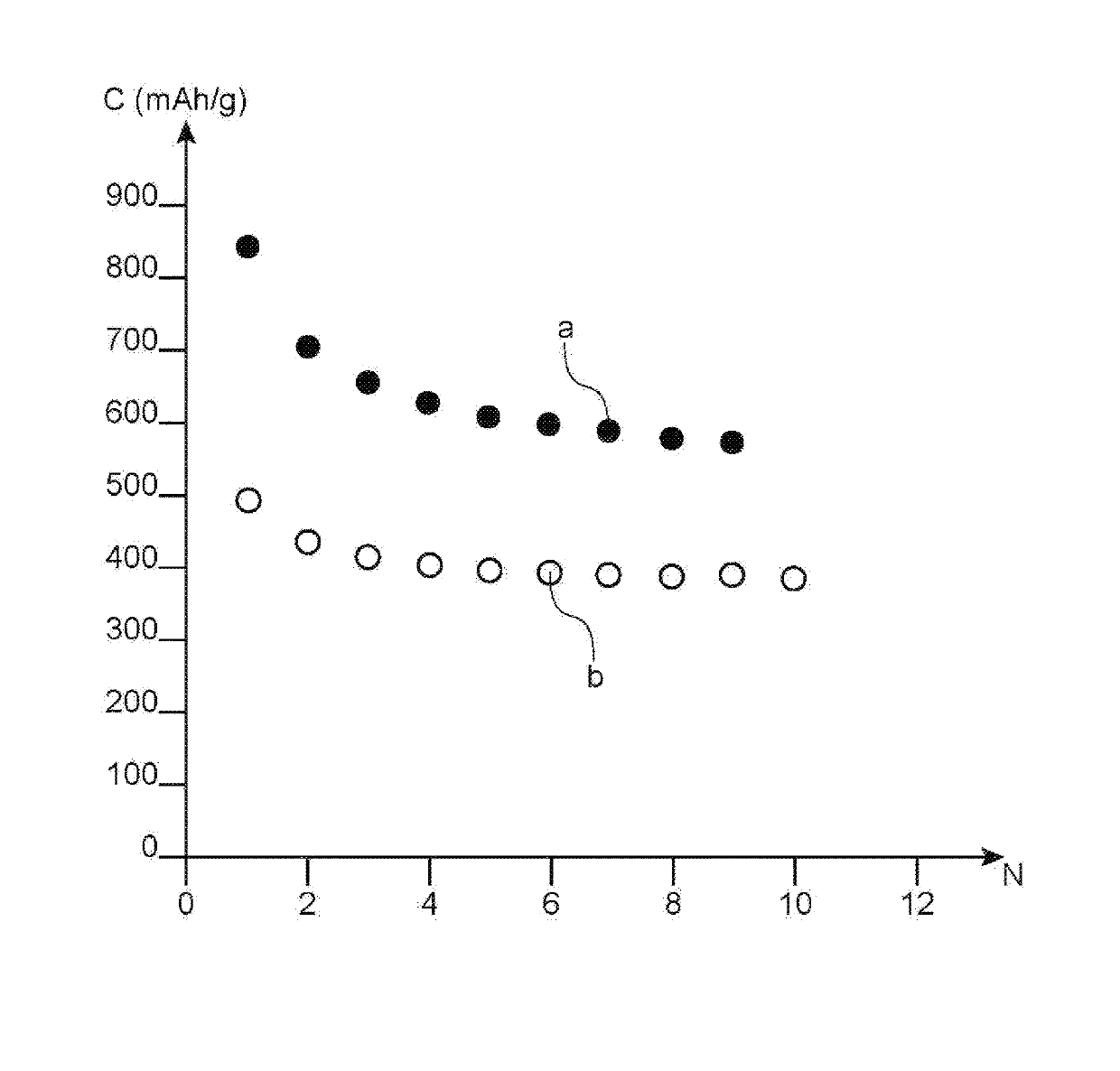Method For Manufacturing An Electrode For A Lithium-Sulfur Battery Using Li2S As An Active Material
a technology of lithium-sulfur battery and active material, which is applied in the direction of positive electrodes, electrode manufacturing processes, cell components, etc., can solve the problems of lithium-sulfur batteries having a certain number of disadvantages, lithium-ion batteries are seeing their performance reach their limits, poor cycle life, etc., to simplify the later dispersion, improve the percolating network of electrodes, and reduce the effect of lithium-ion battery performan
- Summary
- Abstract
- Description
- Claims
- Application Information
AI Technical Summary
Benefits of technology
Problems solved by technology
Method used
Image
Examples
example
[0089]The present example illustrates the preparation of a positive electrode according to the method of the invention.
[0090]To do this, a first mixture is prepared by placing 400 g of ethanol, Ketjenblack® EC-600 JD carbon black (4 g) and phenolic resin (1 g) in contact. After stirring of the mixture at 4000 revolutions / min for 15 minutes, the ethanol is evaporated in order to obtain a dry material.
[0091]The material thus obtained is reduced into grains in order to be carbonised in a tube furnace at 950° C. under argon for 1 hour. This step allows the phenolic resin to be transformed into carbon and the particles of carbon black to be bound together, the resulting material having a large active surface area (greater than 1000 m2 / g according to the BET method) and thus being entirely composed of carbon.
[0092]The carbon material thus obtained is then mixed with Li2S for 1 hour in a jar mill, by means of which a homogenous mixture is obtained. The mixture weight ratio between the Li2S...
PUM
| Property | Measurement | Unit |
|---|---|---|
| specific energies | aaaaa | aaaaa |
| specific energies | aaaaa | aaaaa |
| specific energies | aaaaa | aaaaa |
Abstract
Description
Claims
Application Information
 Login to View More
Login to View More - R&D
- Intellectual Property
- Life Sciences
- Materials
- Tech Scout
- Unparalleled Data Quality
- Higher Quality Content
- 60% Fewer Hallucinations
Browse by: Latest US Patents, China's latest patents, Technical Efficacy Thesaurus, Application Domain, Technology Topic, Popular Technical Reports.
© 2025 PatSnap. All rights reserved.Legal|Privacy policy|Modern Slavery Act Transparency Statement|Sitemap|About US| Contact US: help@patsnap.com

